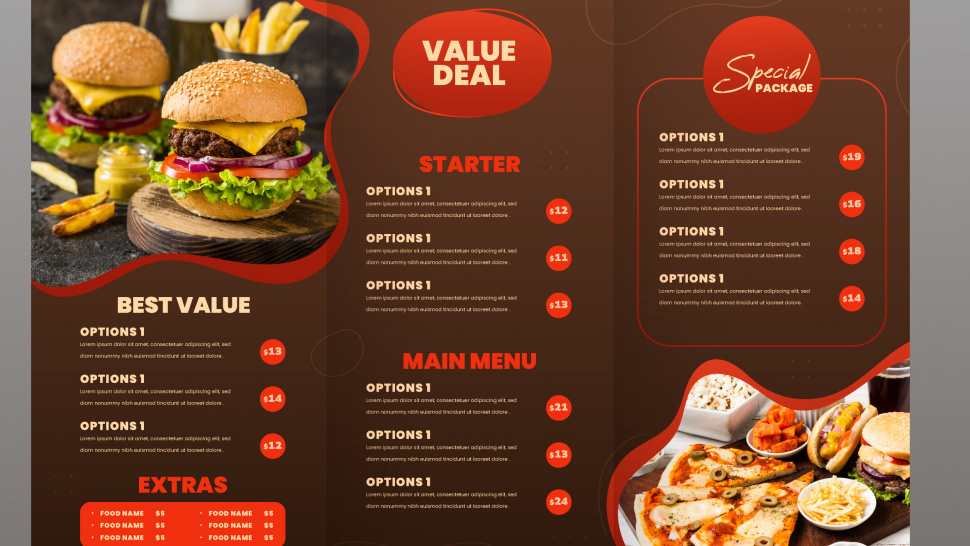Beyond simply listing food and drink items, a well-designed menu is a strategic marketing tool that guides customer decisions, enhances the dining experience, and ultimately boosts sales. In today’s competitive dining industry, restaurant owners must understand the fundamentals of effective menu design to make a lasting impression and increase profitability. From layout and typography to pricing psychology and branding, each element should be carefully considered.
Understanding the Purpose of a Menu
A menu does more than communicate what’s available to order. It acts as a bridge between the restaurant’s brand identity and the customer’s expectations. The design should reflect the personality of the establishment—whether it’s upscale and elegant, casual and fun, or quick and efficient. Your menu is often one of the first tangible pieces of branding your customers encounter, and it needs to establish credibility and set the tone for their dining experience.
Prioritizing Readability
The most basic yet essential rule of menu design is clarity. Your customers should be able to easily read and understand what is offered. This starts with font choice. Avoid decorative fonts that might look appealing but are difficult to read. Stick to legible typefaces and make sure text sizes are adequate. Consider the lighting in your restaurant as well—dim environments may require larger or bolder fonts to ensure legibility.
Spacing and alignment also contribute to readability. Cramming too many items onto a single page or using dense paragraphs can overwhelm diners. Instead, group items logically, use consistent formatting, and leave enough white space so that the menu doesn’t feel crowded.
Using Strategic Layouts
The layout of a menu significantly impacts how diners process and prioritize information. Studies have shown that people tend to scan menus in a particular pattern, often starting at the top right corner—this is sometimes referred to as the “Golden Triangle” of menu scanning. Placing high-margin or signature dishes in these prime areas can subtly encourage customers to order them.
Grouping similar items into categories such as "Appetizers," "Main Courses," "Desserts," and "Beverages" makes navigation easier. Within each category, limit the number of options to avoid decision fatigue. According to menu engineering principles, offering five to seven items per section is optimal for guiding customer choices without overwhelming them.
Highlighting High-Profit Items
Not all menu items are created equal—some bring in more profit than others. A smart menu design subtly promotes these high-margin dishes using visual cues. Boxes, borders, shading, or icons can draw attention to items you want to sell more of. But be careful not to overuse these techniques, or their impact will diminish.
Descriptions can also influence customer choices. Mouth-watering, sensory-rich language can elevate an item and justify a higher price. For example, “Grilled Chicken Breast” may sound generic, but “Herb-Marinated Grilled Chicken Breast with Roasted Garlic Jus” paints a tastier and more premium picture.
Incorporating Pricing Psychology
One of the more subtle arts of restaurant menu design involves pricing strategies. How you present prices can influence customer perception. For instance, removing currency symbols (e.g., using “12” instead of “$12.00”) can reduce the psychological impact of spending money. Dropping the cents also contributes to a cleaner, more upscale look.
Another trick is to use price anchoring. By including a high-priced item at the top of the menu or at the start of a section, other dishes may seem more reasonably priced by comparison. This tactic doesn’t just increase the chances of mid-range items being chosen; it can also occasionally lead to a customer ordering that premium dish.
Using Descriptive Language
Menu descriptions shouldn’t just list ingredients—they should tell a story. Descriptive language evokes emotion and anticipation. Words like “succulent,” “crispy,” “velvety,” or “zesty” engage the senses and create a craving in the reader’s mind. Mentioning where ingredients are sourced—like “grass-fed Angus beef” or “locally harvested heirloom tomatoes”—adds perceived value and authenticity.
That said, balance is key. Overly long descriptions or pretentious wording can frustrate diners. Keep it concise while still being vivid and informative.
Incorporating Visual Elements
Images can be a double-edged sword in menu design. High-quality, professional food photography can enhance appeal and entice orders. However, poor-quality or generic stock photos can do more harm than good. If you choose to include images, make sure they accurately represent the food and align with your restaurant’s overall aesthetic.
Graphic elements like icons (e.g., for vegetarian, spicy, or gluten-free items) are helpful for quickly conveying important information. Background colors and textures, when used tastefully, can also reinforce the theme or ambiance of your restaurant.
Reflecting Brand Identity
Every design choice should reinforce your brand’s personality. A minimalist, black-and-white menu with sleek fonts might suit a modern bistro, while a colorful, playful design with hand-drawn elements might be perfect for a family-friendly diner. Your menu should echo the atmosphere, service style, and clientele of your restaurant.
Consistency across all branding—menus, signage, website, and social media—helps create a unified customer experience and increases brand recognition.
Optimizing for Different Formats
In the digital age, menus aren’t just printed on paper. They exist on websites, mobile apps, and QR code-accessed PDFs. Restaurant owners must ensure that their menus are responsive and easy to navigate on all devices. This may require simplified designs or the use of digital menu boards in fast-casual settings.
Additionally, having seasonal or rotating menus means you’ll need a design system that allows for easy updates. Using editable templates or working with a designer who understands your restaurant’s evolving needs can save time and ensure consistency.
Testing and Getting Feedback
No menu design is perfect from the start. It’s important to test changes and gather feedback from both staff and customers. Servers often have valuable insights into which items customers ask about most or which descriptions lead to confusion. Similarly, observing ordering patterns after a redesign can help identify whether your menu is guiding diners as intended.
Regular reviews of your menu’s performance can uncover opportunities to refine pricing, remove underperforming items, and update visuals. This iterative process keeps your menu fresh and aligned with customer expectations.
Training Staff on Menu Knowledge
Even the best-designed menu won’t reach its full potential if your staff isn’t familiar with it. Train your servers to understand not only the content of the menu but also the intention behind the design. They should know which dishes are most profitable, how to describe them engagingly, and how to guide diners through the selection process.
An informed staff can act as an extension of your menu, reinforcing the branding and enhancing the customer experience.
Conclusion
Effective restaurant menu design is more than an artistic endeavor—it’s a strategic tool that shapes the customer journey and influences purchasing behavior. From creating logical layouts to applying pricing psychology and reinforcing your brand, each detail contributes to the success of your establishment. Restaurant owners who invest time and thought into their menu will see rewards in customer satisfaction and increased sales.
Whether working with a professional designer or crafting your own layout, understanding these core principles of restaurant menu design will help ensure your menu isn’t just a list of offerings—it’s a vital asset to your business. What changes are you considering for your own menu?



Share the News